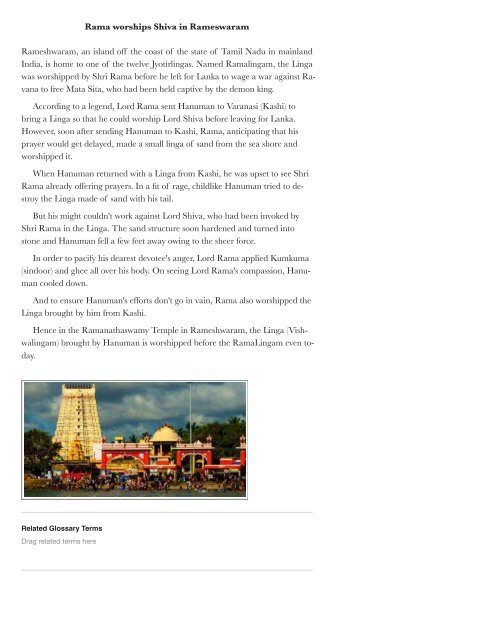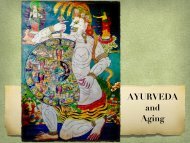How Thoreau's Walden Pond Mixed with the Ganges and Yoga Came to America with Swami Vivekananda
One early morning in 1846, during the coldest days of a New England winter, Henry David Thoreau looked out the window of his small cabin on Walden Pond and saw men cutting its ice into blocks. That ice was hauled by horse to a railroad that ran across the western edge of Walden Pond, packed into a boxcar, taken to Boston and loaded onto a clipper ship that sailed to Calcutta, India, arriving about four months later. Once there, that ice was purchased by grateful members of the East India Company. Thoreau had witnessed a small part of the global ice trade between New England and India that took place during the latter part of the nineteenth century. When Thoreau considered the ice trade, his vision sailed on metaphors far beyond the scope of business. The waters he imagined flowed both east and west and carried not just natural elements, but culture, religion and philosophy as well. He envisioned that after arriving in Calcutta, the New England ice of Walden Pond would eventually melt and run downhill where it would join with the sacred water of the Ganges. He wrote in Walden: "It appears that the sweltering inhabitants of Charleston and New Orleans, of Madras and Bombay and , drink at my well. In the morning I bathe my intellect in the stupendous and cosmogonal philosophy of the , since whose composition years of the gods have elapsed, and in comparison with which our modern world and its literature seem puny and trivial; and I doubt if that philosophy is not to be referred to a previous state of existence, so remote is its sublimity from our conceptions. I lay down the book [Bhagavad-Gita] and go to my well for water, and lo! there I meet the servant of the Bramin, priest of and and who still sits in his temple on the Ganges reading the , or dwells at the root of a tree with his crust and water jug. I meet his servant come to draw water for his master, and our buckets as it were grate together in the same well. The pure Walden water is mingled with the sacred water of the Ganges." This book tells the story of these waters . . .
One early morning in 1846, during the coldest days of a New England winter, Henry David Thoreau looked out the window of his small cabin on Walden Pond and saw men cutting its ice into blocks. That ice was hauled by horse to a railroad that ran across the western edge of Walden Pond, packed into a boxcar, taken to Boston and loaded onto a clipper ship that sailed to Calcutta, India, arriving about four months later. Once there, that ice was purchased by grateful members of the East India Company. Thoreau had witnessed a small part of the global ice trade between New England and India that took place during the latter part of the nineteenth century.
When Thoreau considered the ice trade, his vision sailed on metaphors far beyond the scope of business. The waters he imagined flowed both east and west and carried not just natural elements, but culture, religion and philosophy as well. He envisioned that after arriving in Calcutta, the New England ice of Walden Pond would eventually melt and run downhill where it would join with the sacred water of the Ganges. He wrote in Walden: "It appears that the sweltering inhabitants of Charleston and New Orleans, of Madras and Bombay and , drink at my well. In the morning I bathe my intellect in the stupendous and cosmogonal philosophy of the , since whose composition years of the gods have elapsed, and in comparison with which our modern world and its literature seem puny and trivial; and I doubt if that philosophy is not to be referred to a previous state of existence, so remote is its sublimity from our conceptions.
I lay down the book [Bhagavad-Gita] and go to my well for water, and lo! there I meet the servant of the Bramin, priest of and and who still sits in his temple on the Ganges reading the , or dwells at the root of a tree with his crust and water jug. I meet his servant come to draw water for his master, and our buckets as it were grate together in the same well. The pure Walden water is mingled with the sacred water of the Ganges."
This book tells the story of these waters . . .
Create successful ePaper yourself
Turn your PDF publications into a flip-book with our unique Google optimized e-Paper software.
Rama worships Shiva in Rameswaram<br />
Rameshwaram, an isl<strong>and</strong> off <strong>the</strong> coast of <strong>the</strong> state of Tamil Nadu in mainl<strong>and</strong><br />
India, is home <strong>to</strong> one of <strong>the</strong> twelve Jyotirlingas. Named Ramalingam, <strong>the</strong> Linga<br />
was worshipped by Shri Rama before he left for Lanka <strong>to</strong> wage a war against Ravana<br />
<strong>to</strong> free Mata Sita, who had been held captive by <strong>the</strong> demon king.<br />
According <strong>to</strong> a legend, Lord Rama sent Hanuman <strong>to</strong> Varanasi (Kashi) <strong>to</strong><br />
bring a Linga so that he could worship Lord Shiva before leaving for Lanka.<br />
<strong>How</strong>ever, soon after sending Hanuman <strong>to</strong> Kashi, Rama, anticipating that his<br />
prayer would get delayed, made a small linga of s<strong>and</strong> from <strong>the</strong> sea shore <strong>and</strong><br />
worshipped it.<br />
When Hanuman returned <strong>with</strong> a Linga from Kashi, he was upset <strong>to</strong> see Shri<br />
Rama already offering prayers. In a fit of rage, childlike Hanuman tried <strong>to</strong> destroy<br />
<strong>the</strong> Linga made of s<strong>and</strong> <strong>with</strong> his tail.<br />
But his might couldn't work against Lord Shiva, who had been invoked by<br />
Shri Rama in <strong>the</strong> Linga. The s<strong>and</strong> structure soon hardened <strong>and</strong> turned in<strong>to</strong><br />
s<strong>to</strong>ne <strong>and</strong> Hanuman fell a few feet away owing <strong>to</strong> <strong>the</strong> sheer force.<br />
In order <strong>to</strong> pacify his dearest devotee's anger, Lord Rama applied Kumkuma<br />
(sindoor) <strong>and</strong> ghee all over his body. On seeing Lord Rama's compassion, Hanuman<br />
cooled down.<br />
And <strong>to</strong> ensure Hanuman's efforts don't go in vain, Rama also worshipped <strong>the</strong><br />
Linga brought by him from Kashi.<br />
Hence in <strong>the</strong> Ramanathaswamy Temple in Rameshwaram, <strong>the</strong> Linga (Vishwalingam)<br />
brought by Hanuman is worshipped before <strong>the</strong> RamaLingam even <strong>to</strong>day.<br />
Related Glossary Terms<br />
Drag related terms here


















